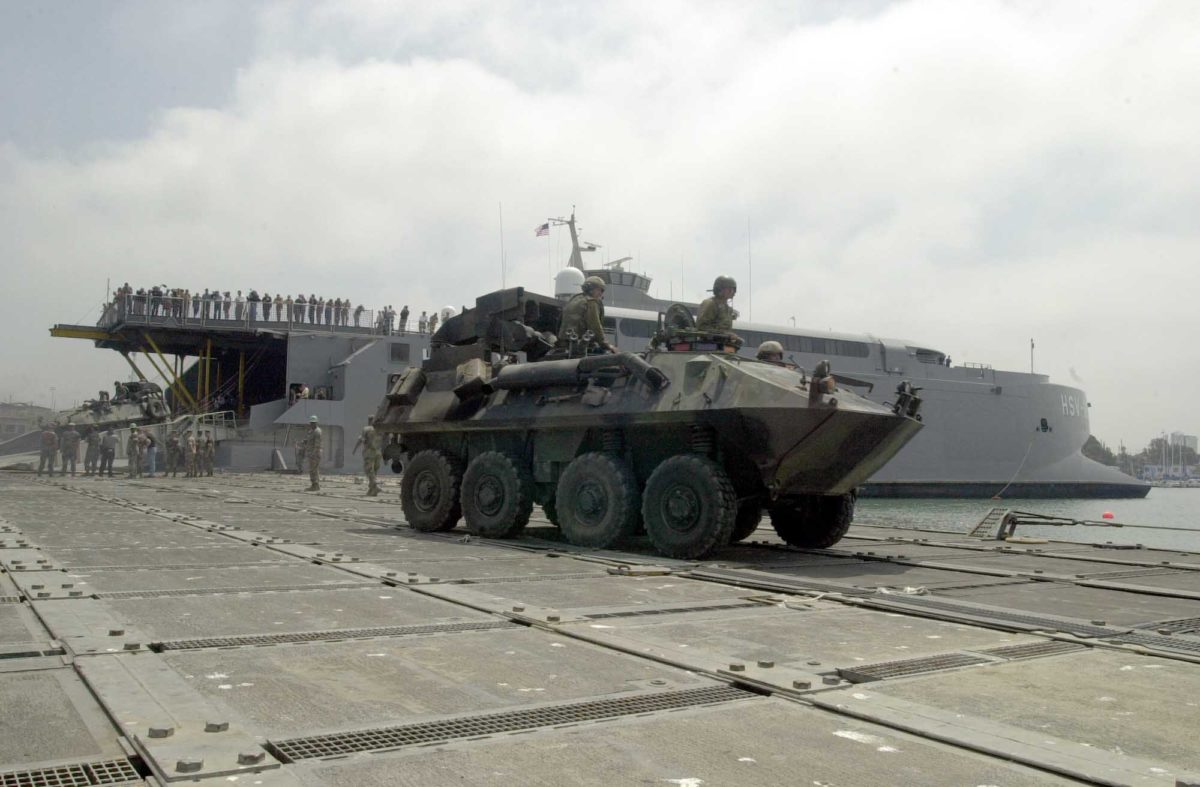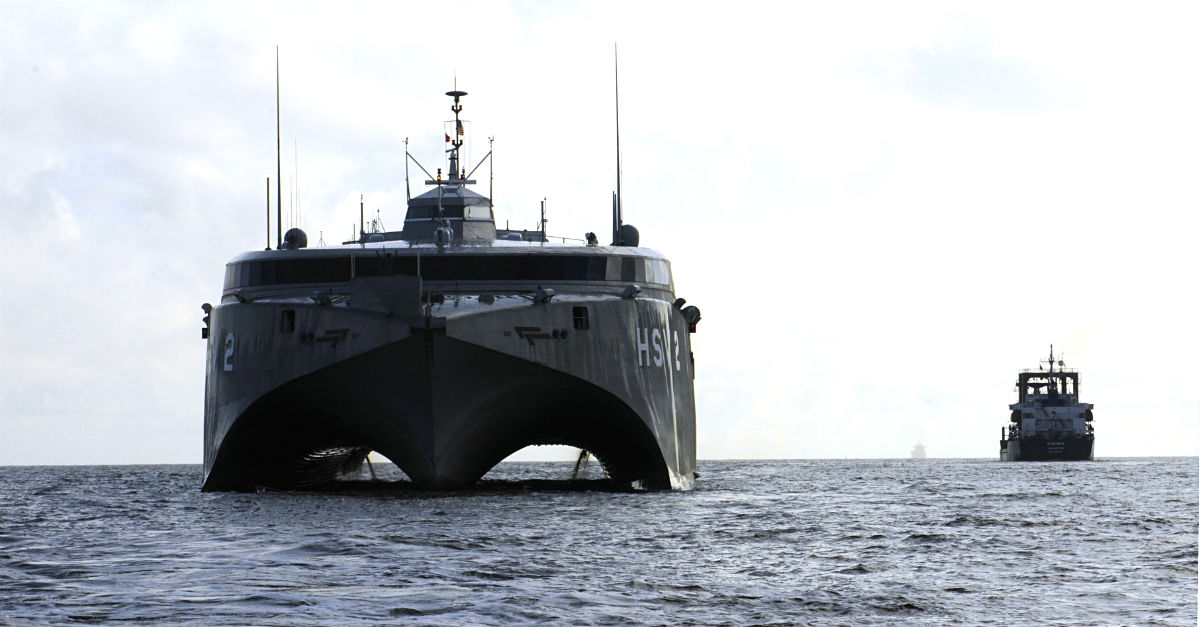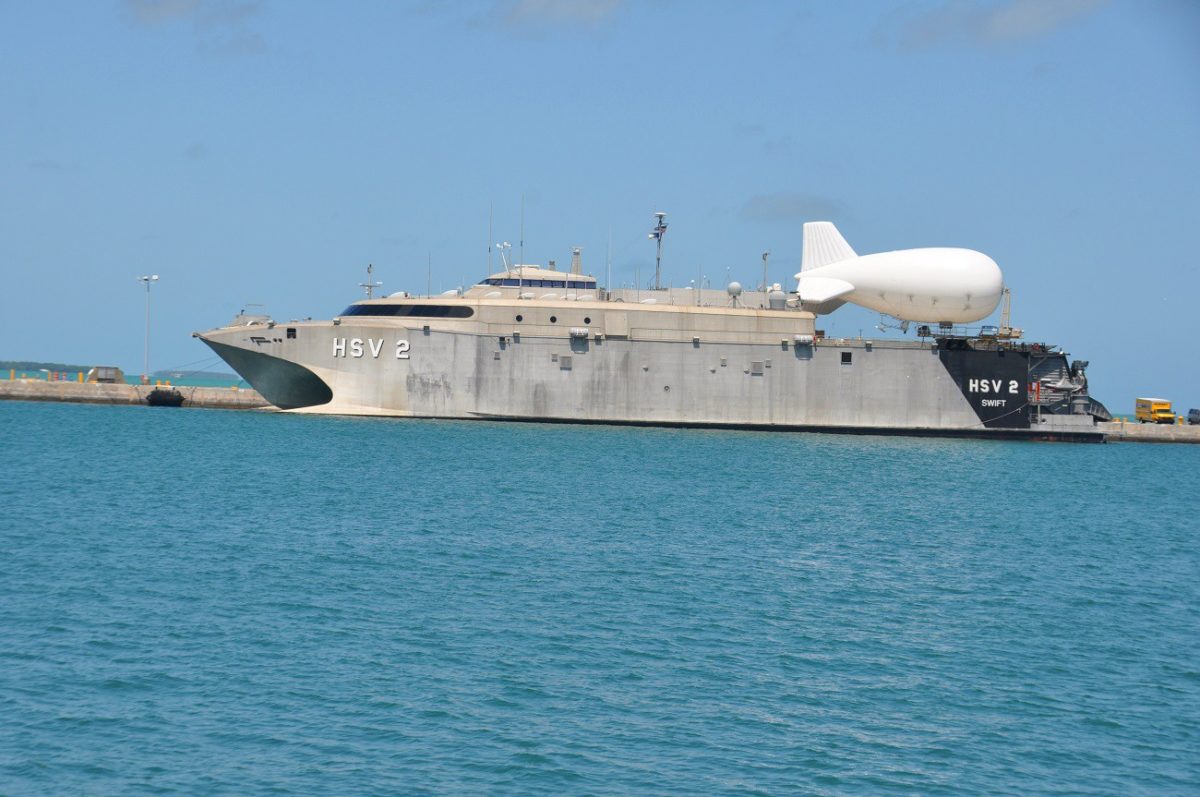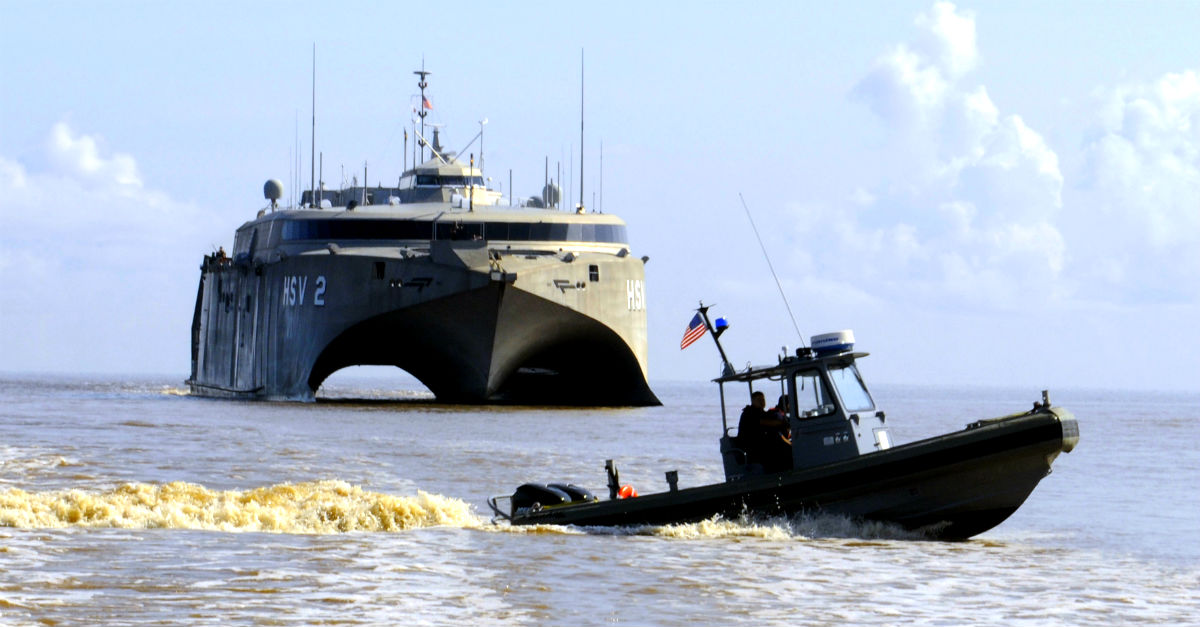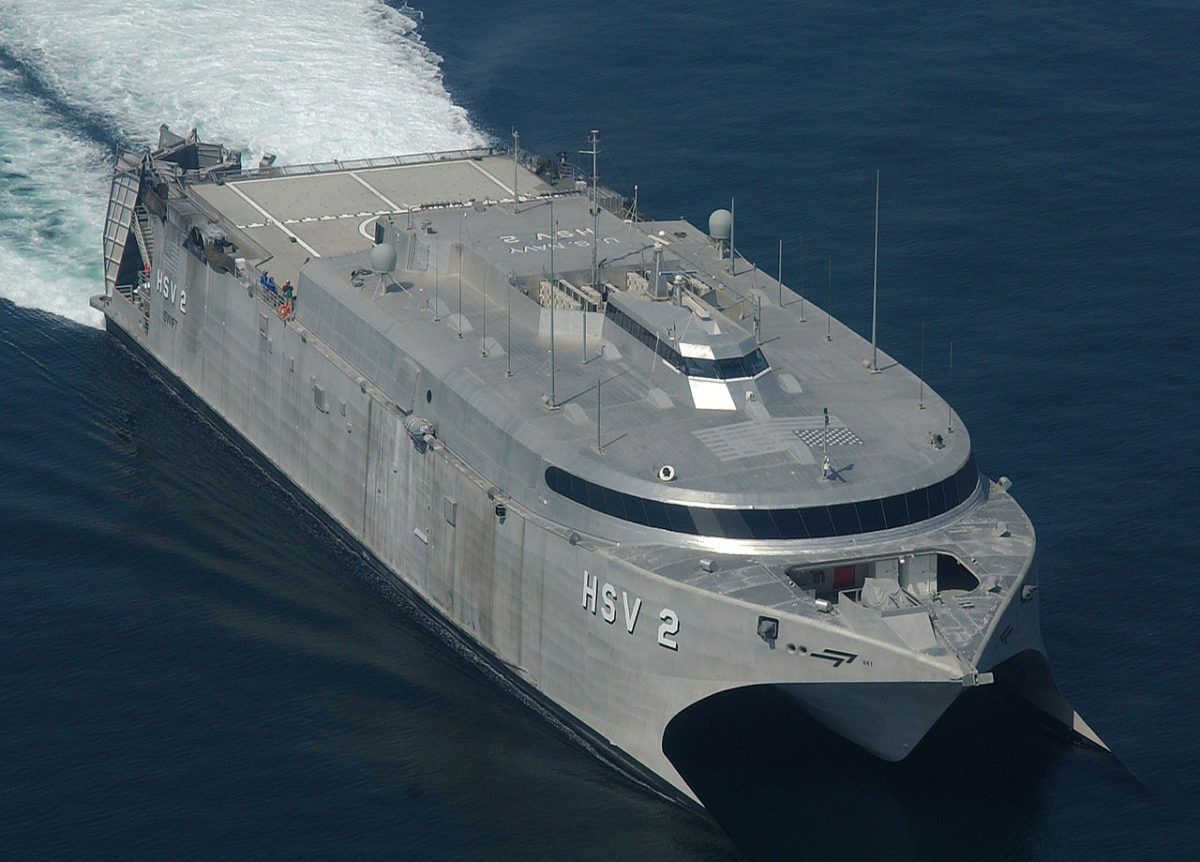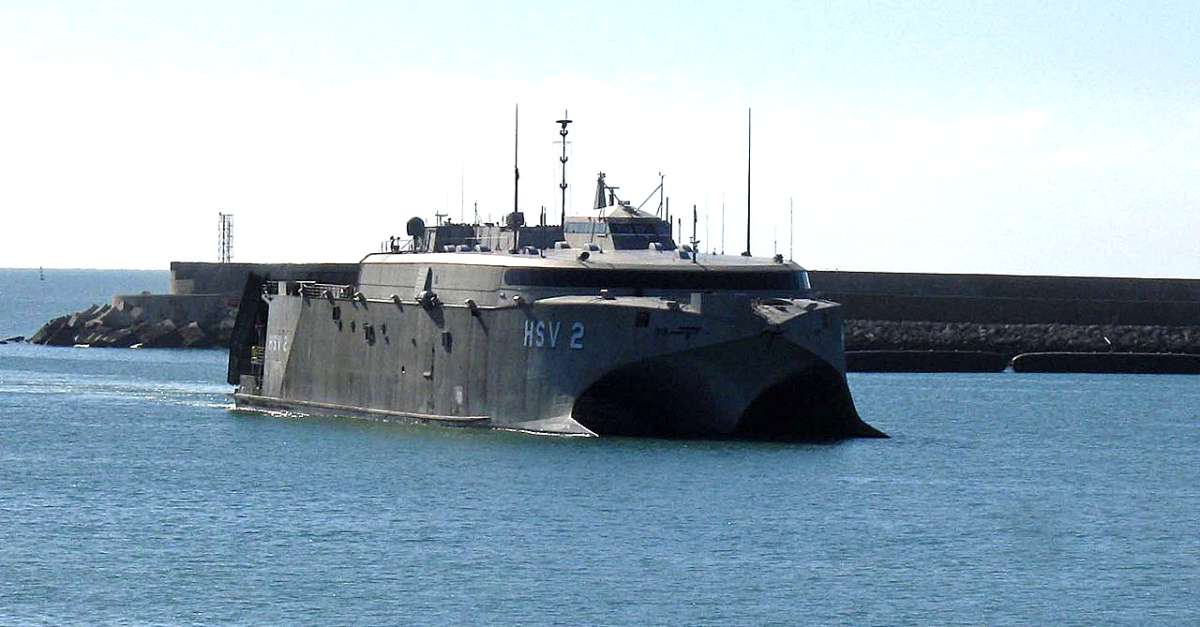
Catamarans have long held a beloved place in Naval tradition. Capable of staying mostly above the water, a catarmaran reduces friction with the water by allowing the water to pass beneath it in channels. When the Navy first came up with the idea of engineering a hybrid naval catamaran, the HSV-2 Swift, they envisioned a military ship able to work on anti-mine operations. Furthermore, the HSV-2 Swift would serve as a useful testing platform for naval technology. In 2008, Australian ship builder Incat produced the first and only modern naval hybrid catamaran. The United States Navy employed the craft for ten years before selling it to the United Arab Emirates for dredging operations.
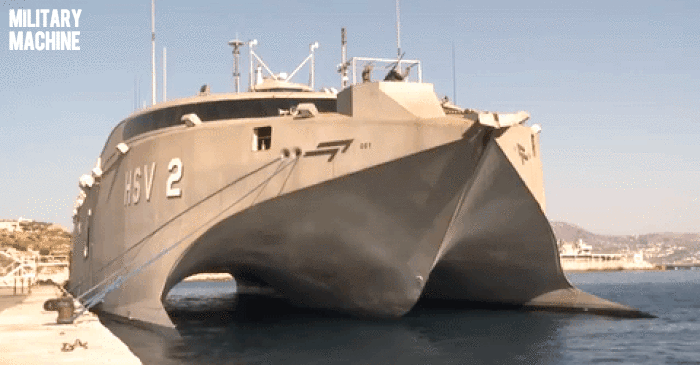
The acronym “HSV” stands for “High Speed Vessel”. Because a hybrid catamaran would stay above the water, its aluminum hull and light weight made it an ideal platform for helicopters and unmanned aerial and naval vehicles. When it first launched from Norfolk, Virginia in October of 2003, the Navy envisioned a class of warship able to quickly manuever to the front lines and disable mines or launch a wave of UAVs and helicopters into action.
The first of this class of vessel, the HSV-1 Joint Venture, saw action in the invasion of Iraq in 2003. The HSV-1 Joint Venture acted as a forward staging platform for U.S. Special Forces and Navy SEALS in the acquisition of Umm Qasr, Iraq, a key shipping port that needed to be taken intact.
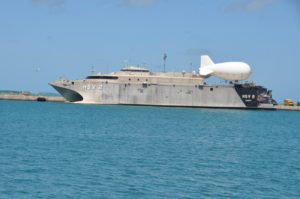
Speed:
As for the HSV-2 Swift, it managed to break records for the fastest transit from the Northern Great Barrier Reef to Booby Island. The Swift averaged 39 knots across the area. It also served as a recovery ship for aircraft. Furthermore, the Swift worked to great effect in disaster relief from the 2005 tsunami in Northern Sumatra.
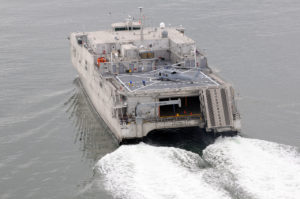
Future:
Despite a decent record of service, this particular style of hybrid catamaran was sold off by the U.S. Navy in favor of a new Spearhead-class expeditionary fast transport. The Spearhead-class expeditionary fast transport was a heavier catamaran craft capable of launching more airborne and sea vehicles. The USNS Spearhead (T-EPF-1) launched in 2011 just in time for the HSV-2 Swift to be decommissioned and sold off to the United Arab Emirates in 2013.
The HSV-2 Swift was never meant as a combat ship. Its armament was purely defensive with only four emplacements for manned .50 caliber machine guns. Of a crew of 35, the majority of the focus of the ship’s activities was centered on logistics and recovery of downed aircraft at sea. It could hold up to 107 people with additional berthing available for another 35, making it an ideal place for a temporary command and control center.

Combat Damage off Yemen:
After being acquired by the United Arab Emirates in 2013, ostensibly for non-militarized dredging operations, it was invariably struck by Houthi rebels in Yemen. Undoubtedly, it was acting as a forward naval operating base for Saudi-backed forces in the area and was thus designated a target. On October 1, 2016, multiple news sources reported that the HSV-2 Swift, while under lease to the United Arab Emirates, was struck by a missile. It was located off-shore from the port city of Mokha, Yemen.
The ship sustained heavy damage, including the loss of crew. The type of missile fired is still unknown. According to news sources from the area, the HSV-2 Swift was towed back to friendly waters to be refitted and repaired.
Powerplant:
Caterpillar 3618 marine diesel engines powered the HSV-2 Swift. Each Caterpillar 3618 engine produces up to 9,655 hp (7198.77 kw).
See HSV-2 Swift Specifications
| Length: 321.5 feet (98.0 m) |
| Beam: 88.6 feet (27.0 m) |
| Draft: 11.15 feet (3.40 m) |
| Speed: 45 knots (83 km/h; 52 mph) maximum; 30 knots (56 km/h; 35 mph) operating |
| Range: 3,500 nmi (6,500 km; 4,000 mi) |
| Capacity: Est. 605 long tons (615 t) |
| Max. Displacement: 1,668 long tons (1,695 t) full |
| Crew: 35 |
| Complement: Berthing available for 107; emergency expansion up to 135. |

